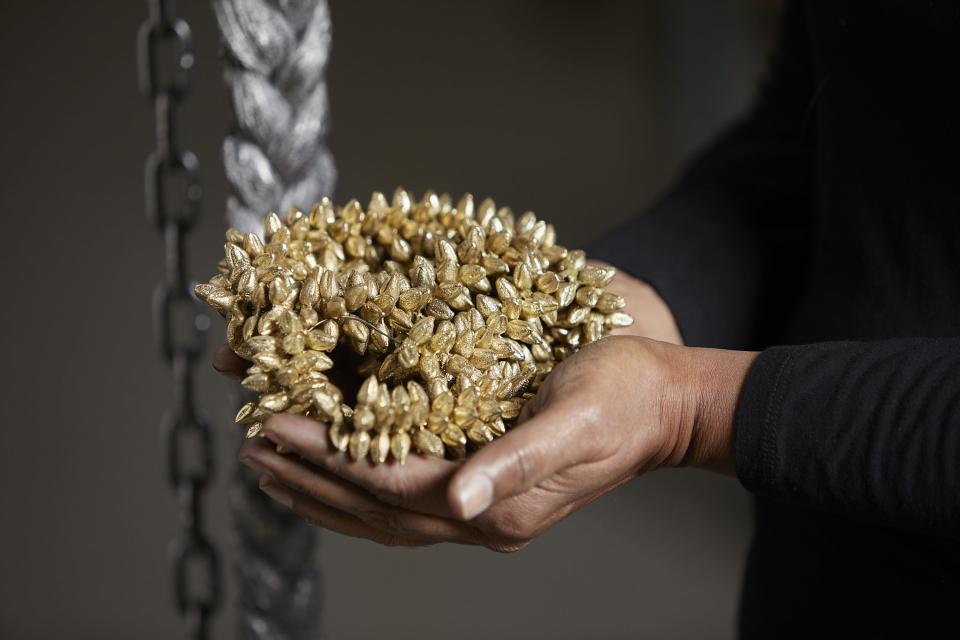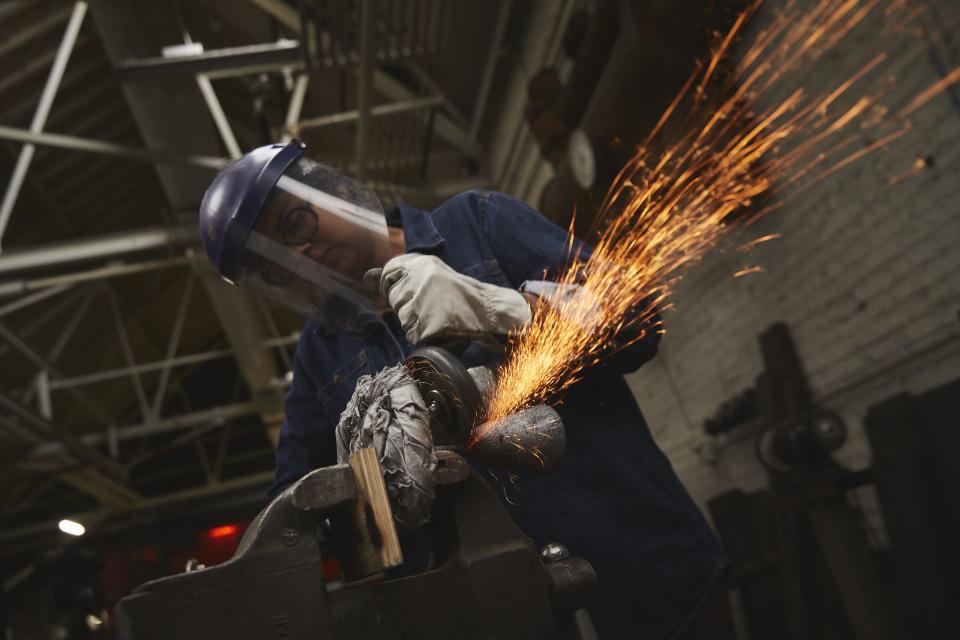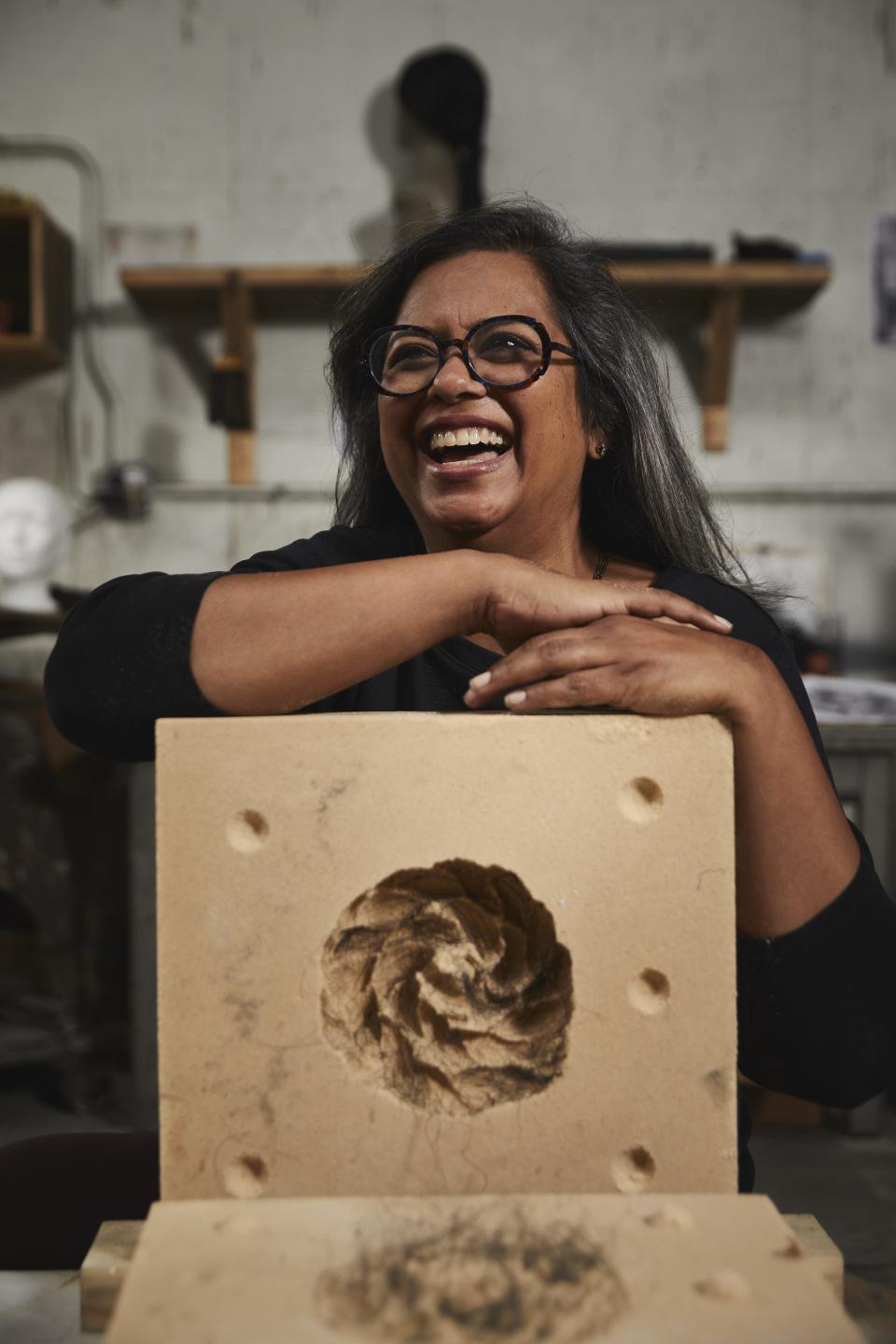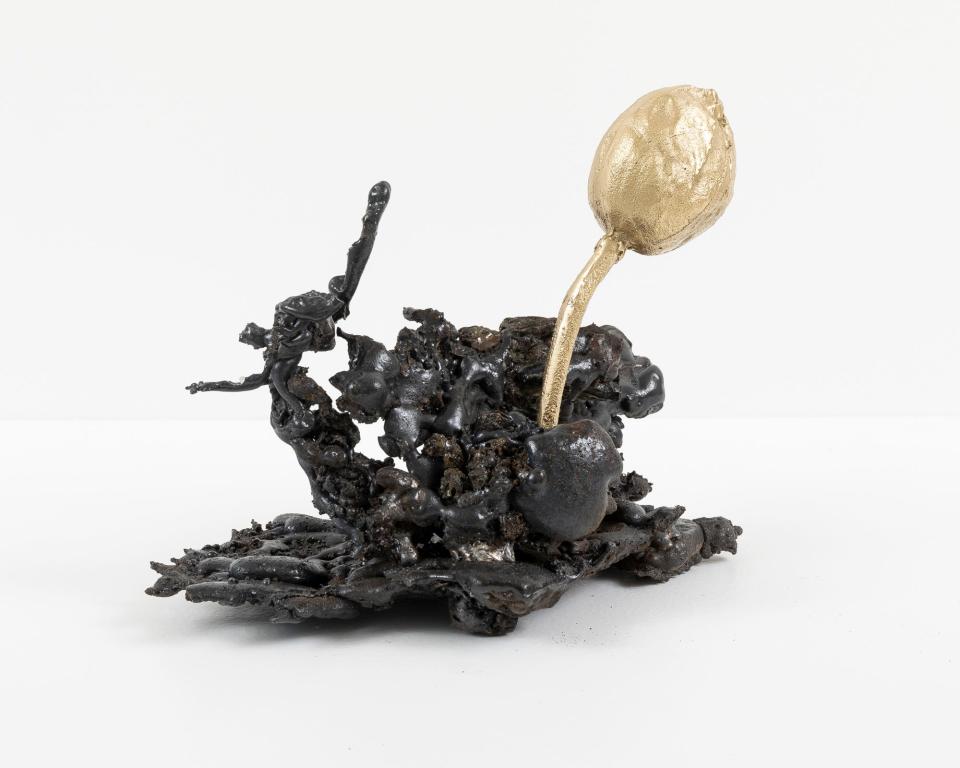When artist Nirmal Raja worked in Kohler's foundry, the results were something unexpected
Walking through a room of Milwaukee artist Nirmal Raja's new show, a visitor sees finely detailed women's hairpieces, many with long braids, some with traditional Indian ornamentation, such as a jasmine garland.
Look a little closer. They're made of iron and brass, weighing as much as 45 pounds.
In 2023, Raja spent three months as an artist-in-residence at the Kohler Industrial Castings foundry as part of the Kohler Arts Center's Arts/Industry program. Since 1974, more than 500 artists from more than 25 countries have had residencies in either Kohler's pottery or foundry, working with Kohler technicians to create new work.
While the application process is competitive, Kohler doesn't require that artists have prior experience with either pottery or iron. Before taking up her residency, Raja had never worked with metal, not even to make jewelry.

But Raja, a Nohl Fellowship winner and past Milwaukee Arts Board artist of the year honoree, is both a conceptual artist and a creator who likes to explore the qualities that arise from a given material. "Grace and Grit," her new show at Portrait Society Gallery, braids together both of those strains of her art-making.
Raja described her show as "very focused on the resilience and strength of women, particularly in the South Asian or immigrant context." One piece is a brass cast of one of the bags she brought with her when she came to the United States from India. She also made a brass cast of a hair ornament that her grandmother had given her.
Molten iron and safety first
Raja would have been open to either the pottery or the foundry. When assigned the latter, "concepts of weight began to percolate in my mind," she said. Specifically, "invisible weight, the weight that we all carry, particularly women and immigrant women, and notions of memory and burden." She describes her upbringing in India as traditional with strong pressures for women to conform. But she also admires her grandmothers for their frugality and creativity.
Her first days at Kohler were filled with safety training and learning about casting. Because this process uses sand molds that can't be re-used, everything created is a one-off, a realization that Raja called "shocking." Learning this forced her to change her original plan, which she said would have been better suited for a method with reusable molds.
Raja learned that not only is iron strong and heavy, it also can be very fragile.
"I was really surprised how brittle it can be when you drop it, or when you hit something," she said.

In the industrial and largely male environment of the castings foundry, Raja followed her instinct "to soften the atmosphere with making something that's delicate." Describing the challenge she set herself, Raja laughed and said: "What can you do with something that is so meant for machinery and industry and production?"
Sand casting a metal object is a multistep process with the potential for things to go wrong at several different points.
Raja began with a pattern of the object she wanted to create, then built a wooden box to hold the sand that would surround the pattern on all sides. After a PEP SET machine dumped a mixture of sand and resin at 200 pounds per minute, Raja quickly tapped and packed the sand into the box before it set (hardened). The tighter the packing, the finer the detail in the finished object. When both the bottom and top halves of the sand mold were prepared, she carefully took out the pattern, then scratched channels in the mold both for molten metal to flow in and air to flow out.
When a mold was completely prepared, Kohler Industrial Castings workers poured molten metal into the mold. The molds were left to cool overnight. Then Raja removed the cast object and worked on it as needed with tools such as a wire brush and sander.
Raja first planned to replicate a pre-colonial cylindrical measure from India, but Kohler technician William Rice, her liaison with the foundry, explained how difficult that would be, because it would need to be exactly centered in the mold. That led her to work with fabric and synthetic hair, making the bags and hairpieces that make up a big portion of "Grace and Grit."

She finished some iron objects by applying a patina known as "gun blue," commonly used to finish and maintain guns. Raja laughed as she remembered a neighbor accepting deliveries from a gun store for her.
Rice, who is also an artist, gave her practical suggestions that streamlined her labor during the process. While Raja started out thinking she would need to make each individual bud in a jasmine garland, he made a template for her that allowed four to be cast at a time.
Raja said jasmine garlands are iconic in southern India, where she grew up, both as romantic gifts and in worship at temples.
Making use of everything in the foundry
Raja not only used foundry tools and techniques to make art, she also responded to what she noticed about the working environment there.
A week or two into the residency, a factory mold (not hers) failed, resulting in the dumping of molten metal in the floor. She saw this accidental slag as something beautiful shaped by gravity and the viscosity of the metal.
"I'm always looking for that," she said. "I feel like the material tells you what to do next."

So Raja grabbed a 450-pound pallet of slag, she said laughing, and began to work with it. She created several sculptures with a slender flower rising out of the haphazard muck of iron slag, to which she's given the suitably Buddhist title "There is the mud and there is the lotus."
Her show also includes photographs from the factory windows that she printed on fabric, and a soundtrack that began with sounds recorded in the foundry, which David Redick incorporated into a musical composition.
While at Kohler, Raja also made a metal braid that currently wraps around a column in a show at Chicago's South Asia Institute. That came from Raja's desire to soften the masculine architecture of the factory. It also can be seen as a mock-up for a monumental public project she would love to cast: wrapping a whole building, preferably something brutalist, with a braid.
Raja and Jodi Throckmorton, chief curator of the John Michael Kohler Arts Center, will give a related talk Feb. 24. This event begins at 5 p.m. at Portrait Society Gallery, 207 E. Buffalo St., Suite 526, then moves to the larger venue of Milwaukee Artist Resource Network, 191 N. Broadway, for the actual talk at 6:30 p.m.
If you go
Nirmal Raja's exhibit "Grace and Grit" continues through March 9 at Portrait Society Gallery, 207 E. Buffalo St. Suite 526. Gallery hours are noon to 5 p.m. Thursdays through Saturdays.
RELATED: Festivals, arts and more things to do in the Milwaukee area in winter 2024
This article originally appeared on Milwaukee Journal Sentinel: Kohler Arts/Industry gave Nirmal Raja time to sculpt with molten metal

